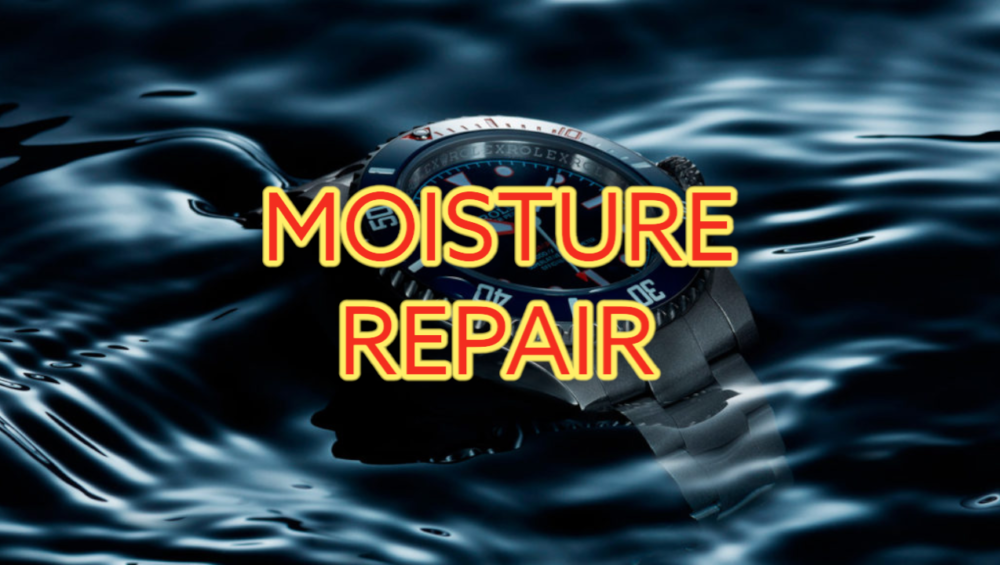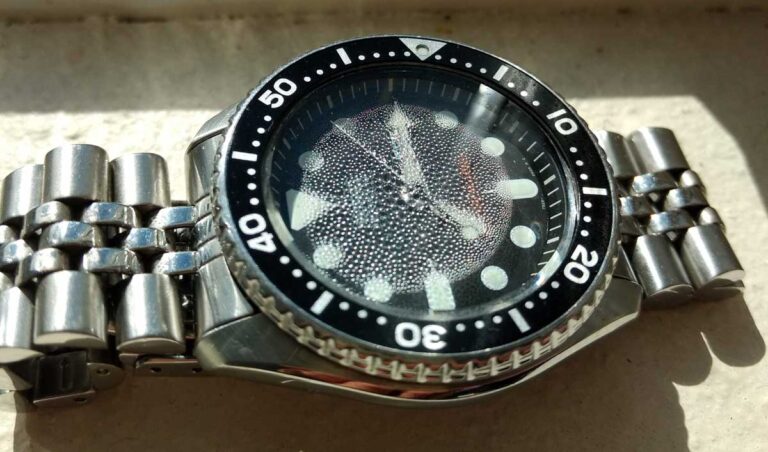SEIKO WATCH MOISTURE REPAIR
Have you ever wondered what makes a watch enthusiast worry? The presence of moisture or condensation inside your new Seiko will do it! It is known that Seiko Diver’s watches are highly water resistant, but these pieces need their regular maintenance to ensure that they hold up to their quality and performance.
Moisture and condensation in timepieces are common and can be caused for a lot of reasons. The smallest amount of moisture in a watch is a problem already, which fortunately has many simple solutions. Keep reading to find out why.
The presence of humidity has been a problem for watches for so long, so there are now proven tricks to protect your precious timepieces. Lucky for you, Watch-Modz is here to help you out! This blog will help you figure it out and dry out a humid watch all by yourself!
WATCH CONDENSATION: WHAT IS WATCH CONDENSATION AND ITS CAUSES?
Have you ever experienced a foggy, cloudy watch face or worse, water droplets inside its crystal? That is moisture. Moisture can also be detected or easily seen in such cases as transparent watch casebacks, which may also show you whether the parts, its movement, or the caseback itself have visible signs of moisture. Once you see this, you’d want to fix it quickly.
The condensation on a watch does not only obscure the time but also damages the internal parts of the piece. It is highly important that we understand the concept of watches being “water resistant” only, because a truly waterproof watch is just a myth.
Non-diver’s watches are mostly “water resistant” only to certain and limited depths of water. Those pieces are not designed to withstand prolonged exposure and immersion in water. Even the most extreme and expensive diver’s watches have depth limits. At some point they will eventually lose their resistance because of the increasing water pressure and time of exposure. You may be proud of your diver’s watch having a 150m water resistance rating, but if your piece has never been serviced for a couple of years, I don’t think it would even survive a trip to the shower.
WATERRESISTANT vs. WATERPROOF
First, let us clear out the misunderstanding behind the concept of waterproofing and water resistance. Most people confuse the meaning of “water resistance” with “waterproof,” but what is the difference?
Waterproof is defined as something that is technically impermeable to water regardless of how long it is submerged in it. On the other hand, water resistance is defined as an object or something that resists the penetration of water for a certain depth, pressure, and duration but is not entirely safe from water.
WATERPROOF WATCHES ARE A MYTH
As anyone who is knowledgeable about watches knows, no timepiece can be 100% waterproof, regardless of the design utilized. Distributors may use the phrase “waterproof,” but watchmakers who are knowledgeable about the subject they are dealing with don’t. Water resistant, yes, but not waterproof.
Diver’s watches with water resistance classification of 300 or even 1000 meters are sometimes referred to as “waterproof” watches because, when properly maintained and used customarily, they are impermeable to water. This is probably the closest thing to a waterproof watch that you can find.
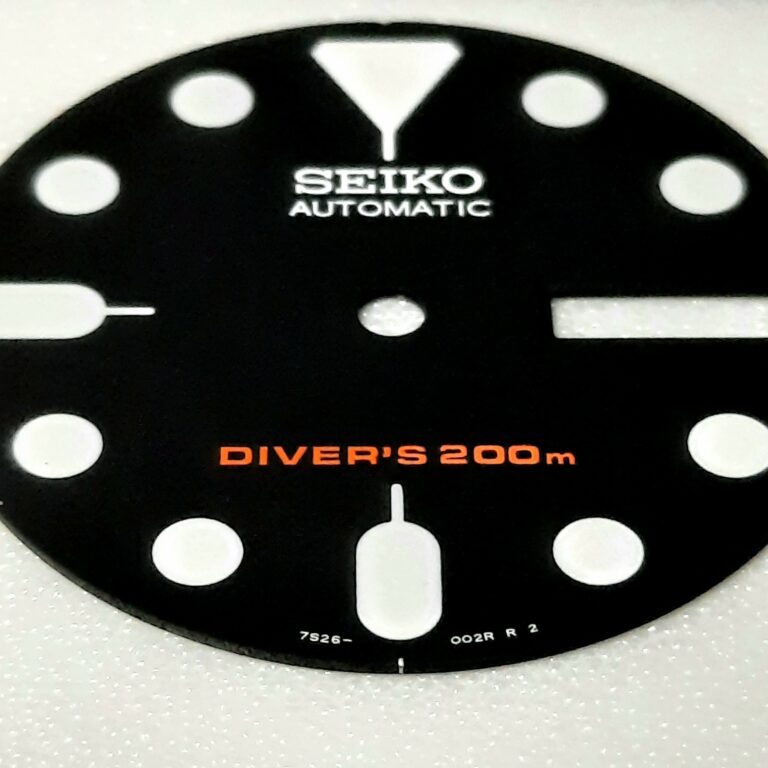
SORRY, NO AFFIRMATIONS ON LABELS
In a sense, labels can be very assuring as to what they say. Such as food labels claiming, “all natural ingredients,” which aren’t entirely true.
The water resistance capabilities of timepieces can deteriorate over time. The key components of a watch that keep its internals safe from water are the rubber or silicone O-rings that are found at the crown and the caseback, which eventually stiffen and deteriorate after a couple of years.
O-rings are pieces that inevitably age as the units are distributed from the factory. O-rings that have aged tend to shrink or stiffen, which then causes the water to penetrate the unit. In such instances, the O-rings would just snap. It may take years before this happens, but it undeniably does.
One possible cause of a water-resistant watch being compromised by water is its improper use or lack of maintenance. Given that a timepiece has a water resistance rating of 30m or 50m, it can be classified as “mildly” sealed from humidity. This can be interpreted to mean that actions like swimming or being caught in the rain may cause water penetration to the watch and may further lead to damage.
Several other diver watches from well-known manufacturers contain extra pushers to run a chronograph in addition to a weak spot at the crown. Even with the sealing O-rings, water can still penetrate the case through all these additional openings created by the moving parts.
Users must ensure the crown and additional push buttons are securely put in place before diving. Any change made to these moving parts while submerged is a water entry point. If you dive with the crown pulled out, it is the equivalent of leaving the door of a submarine open while submerged, regardless of whether your watch has a 1000 m water resistance rating. Your crown might also need to be changed if it develops a flaw over time.
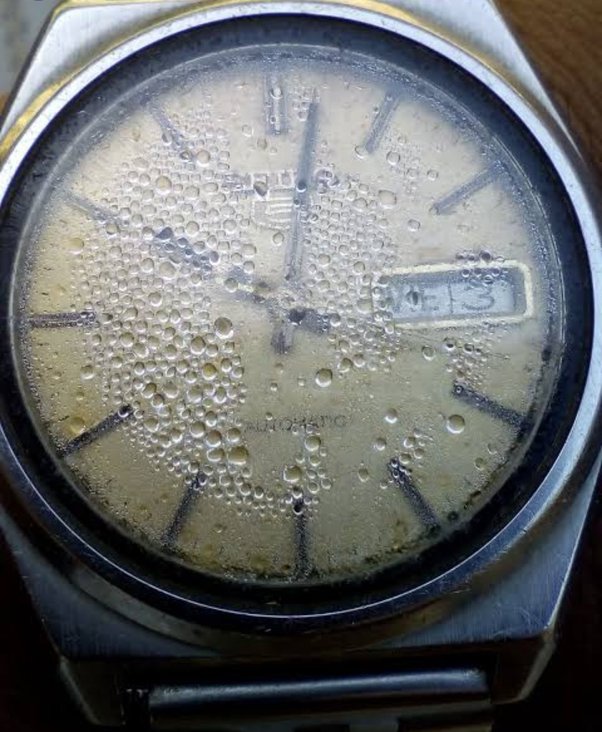
THE CAUSE OF MOISTURE ON YOUR WATCH FACE
Have you ever seen a watch commercial with droplets on its face? Of course not! That’s because, unlike beverages, sweat doesn’t look good on watches. Even when you don’t get your watches wet, there are still several other possible causes for moisture to get into your watch. A common issue is a quick change in air temperature, such as going from a cold room into one that is warm. Similarly, to observing how water condenses on the outside of a cold bottle when you remove it from the refrigerator. Your watch experiences the same process; the warmer air causes condensation droplets to form inside the crystal. Hot showers with watches on are another common source of dampness. Even though your watch has a respectable water resistance rating, condensation from hot water can still occur.
Moisture inside your timepiece can be caused by humid environments, like rainforests or jungles, or even by participating in sports that make you sweat a lot.
Moisture inside your timepiece can be caused by humid environments, like rainforests or jungles, or even by participating in sports that make you sweat a lot.
A crack over the crystal or a poorly sealed caseback are examples of situations that may allow moisture to enter your watch. Water in small quantities can slowly enter your watch, causing condensation on the face—an indicator that it is time to get it fixed.
WATER DAMAGE TO A WATCH
If the watch is left untended, water inside of the watch can damage the movement by causing rust to form on the metallic components of the movement. Soapy or salty sea water is significantly more harmful. The inner workings of a watch, such as the jewels in the movement, the hands, and other small components, are extremely sensitive and operate with extreme precision. Internal corrosion is the death sentence for any mechanical machine. When the movement becomes water-damaged and no longer accurately tells the time, the watch becomes unusable.
Also, when the lume effect of the markers and hands has diminished or stopped lighting, this could be a symptom of water damage.
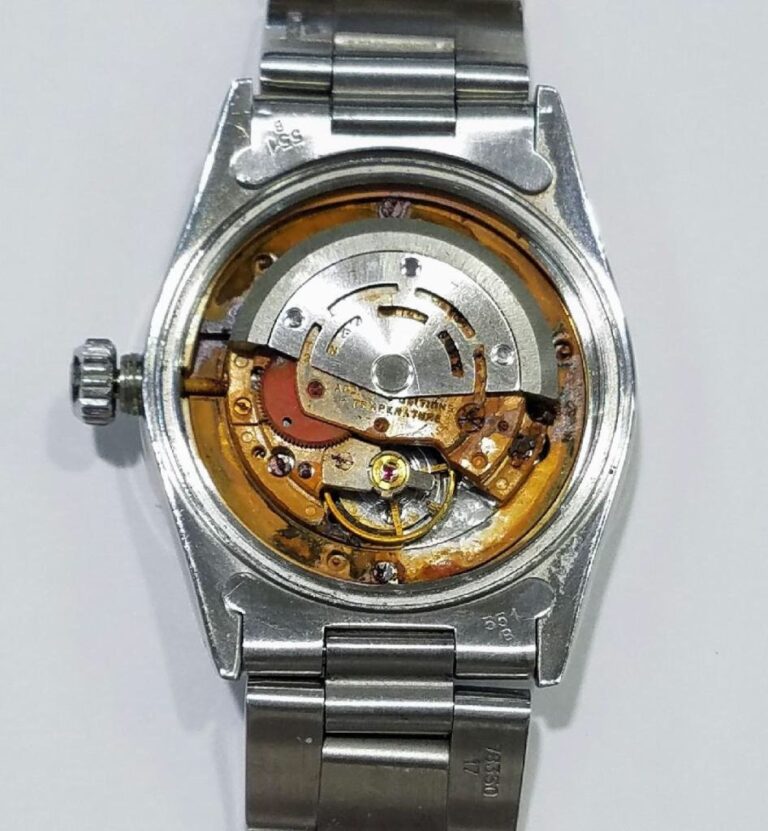
D.I.Y CONDENSATION FIX
There are two main solutions to a moisture problem with your timepiece:
One option is to attempt to dry it out yourself if it’s just a little condensation that affects your timepiece for perhaps a day or two at most, and the humidity inside isn’t too high. Alternatively, if there are more than several more droplets in there, it is preferred to hire a professional.
Let’s assume you can do it. Here are the most popular D.I.Y methods for removing condensation from a watch even before it destroys the movement.
HEAT FIX
Lay your timepiece in its natural position (the caseback lying down), near a radiator, a lamp, or even in just a warm location. With whatever heating method you use, control the temperature, because overheating can cause damage if exposed for too long. Keep a close watch on your timepiece!
Make sure that you open the watch via the crown before applying the heat. To get quick results, put your watch on the back of a laptop or desktop computer. The hot air emitted by the cooler fans will assist you in quickly removing most of the condensation inside. Another method is to use a hairdryer, but also be cautious not to overheat the watch.
The trapped air inside your watch will warm up, causing the moisture to evaporate and hopefully exit through the crown tube. It may seem obvious, but we think it should be said anyway. Never ever place your watch in a microwave or oven!! Both will generate excessive heat and will most likely permanently damage your watch.
AIR DRYING
This may be a slower option to heating the watch but exposing your wristwatch to a cool air fan or a windy spot in your household for a couple of days will end up draining inner condensation by evaporation. Again, remember to unscrew the crown to allow the trapped humid air to pass out of the watch.
DESICCANT TRICK
Submerging a watch that has been accidentally immersed in water in a desiccant material within a closed container or canister is a popular method for aiding its drying process. The moisture in the piece will be absorbed by the desiccant element.
Do you still have your shoe boxes hidden? Check it out for packs of silica gel pebbles. Silica gel pebbles, raw dry white rice, and cat litter pebbles are widely known desiccants that can be purchased or found in specialty shops. Even so, not all these items should be used on a watch. It is highly recommended to avoid the use of rice or cat litter pebbles to avoid starch or mineral particles from entering your watch. Some of these desiccant tricks may be more harmful than beneficial, so cling to the use of proper silica gel in sealed packs.
WWAWMD: What Would a Watch Modder Do?
For modders with the necessary skills, a much faster and more efficient method of removing the caseback of the watch is suggested. For watch modders, we recommend exposing the watch to heat, sunlight, or cool air while facing straight down without the caseback. Moisture will freely evaporate upward through the open caseback.
For those who are familiar with watch servicing, another option is to consider removing the movement and dial entirely, then the manual process of wiping off the humidity with an appropriate microfiber cloth before reassembling everything. You can put these same parts in a dry area for a day or two before reconstructing them.
FIND A WATCHMAKER
If your watch has extensive water damage, our best advice is to avoid attempting to repair it yourself. Instead consider taking it to a reputable and reliable watchmaker for professional repair. If you don’t think you can fix it on your own, sometimes giving up is not that bad. It’s better to ask for professional help than attempt it on your own.
We also recommend that you have it properly maintained by a watchmaker instead of a jewelry store that provides service and maintenance. Serious moisture damage may necessitate the disassembly of up to 100 watch components.
Individually, the external and inner parts must be dried and lubricated. Many may also require replacement. Professionals perform these tasks in drying machines to ensure that moisture as well as other residues are removed. Compromised pieces might have to be repaired, as well. All this needs to be completed by a pro. If the simple fixes don’t work, don’t be afraid to seek professional assistance to save your watch.
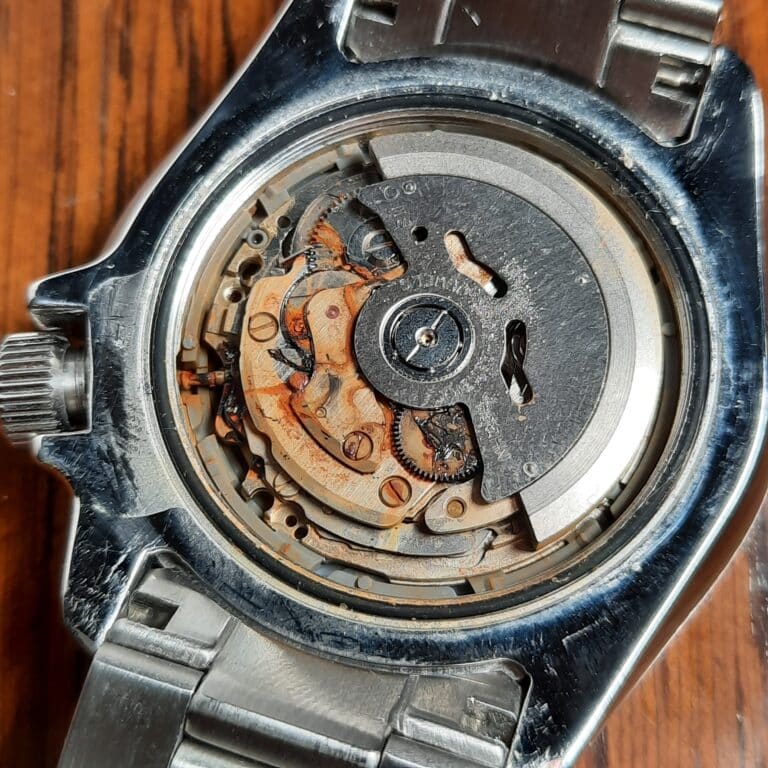
CONCLUSION
Once you’ve resolved the moisture issue with your Seiko wristwatch, it’s a breeze to figure out why or where the condensation came from. The more you know about your Seiko, the better equipped you will be to safeguard it in the future. If you are a scuba diver, it is recommended that you have your watch tested every year. Or every two years if you do not wear your watch underwater on a regular basis.
Another thing is that you must fully comprehend your watch’s “water resistance” rating and read the user’s manual. It is necessary to read the manual to avoid misusing your watch and causing damage to it.
If you live or work in very humid environments, it is recommended that you leave your watch at home or invest in a diver’s watch. Better yet, refrain from taking your watches in hot showers, as hot showers or temperatures with soap can damage your watch and put its water resistance to the test.
If you notice small cracks on the crystal of your watch, it is best that you have it replaced as immediately as possible. Watch-Modz has a large inventory of Seiko Mod parts that will protect your Seiko watch from moisture or dust infiltration.
The other two parts that typically impact the water resistance rating of your Seiko watch are worn-out crowns and cracked casebacks. Check that these are properly sealed and that the gaskets you’re using aren’t stiff or damaged, or your watch might not be completely protected from water coming inside. You can see a wide range of replacements by checking out our shop.
About The Author

Pamela Tabago is an Information Specialist at Watch-Modz LLC. She is passionate about everything related to watches, from the best automatics to modding a Seiko.
She brings her data-driven experience in informative writing and her love for watches to the blog. She also provides watch-related content for other modding enthusiasts like herself.

